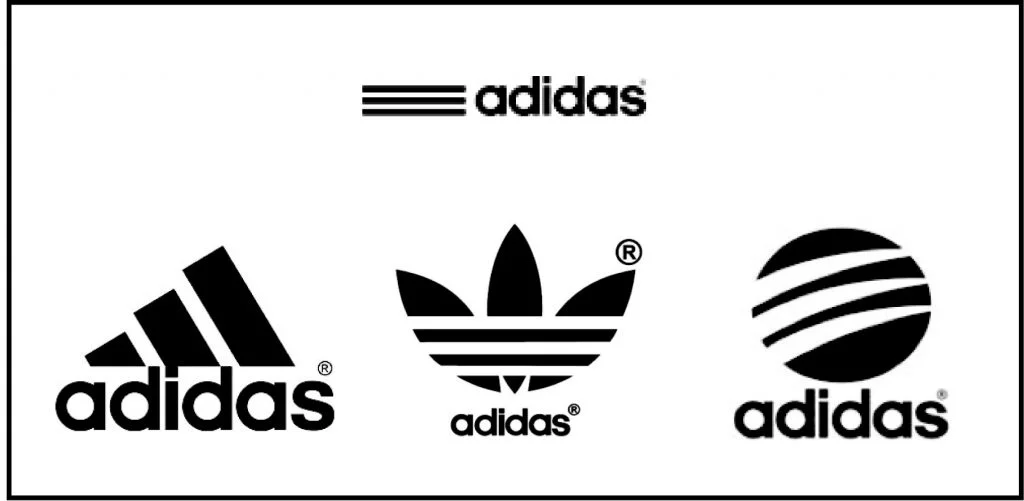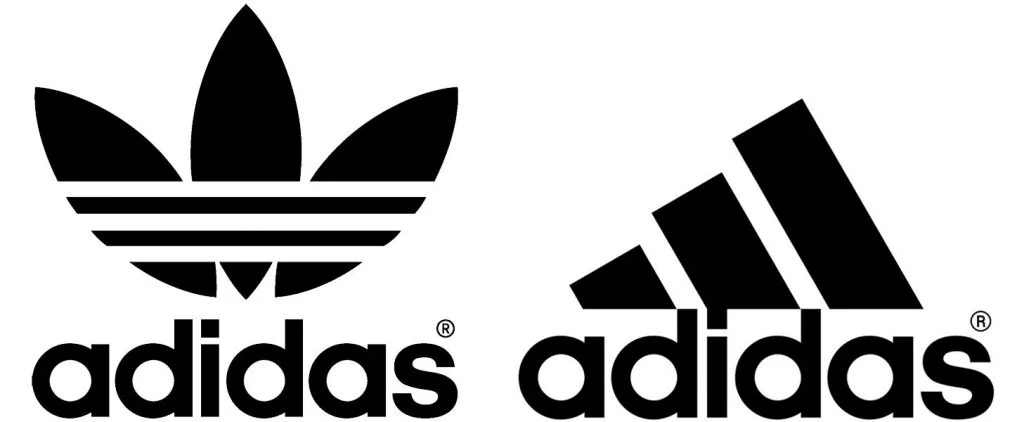Unlike many global brands that use a thoughtful and often philosophical approach to their naming and logo design. logo design, the story of Adidas looks more "banal". After all, the name of the German brand brand is only a derivative of the name of its founder, Adolf (Adi) Dassler. Nevertheless. nevertheless, the story of the brand's visual image is not so simple.
Being a true sports fan, Adi Dassler started to design the first models of sports shoes immediately after returning from the First World War. But it was not until 1924 that Adi and his brother Rudolf (Rudy) officially registered the Dassler Brothers Shoe Factory (Gebrüder Dassler). One year later. year later, Adolf invented and made the world's first spiked soccer boots, which were so comfortable that they quickly became popular.
To advertise their products, the brothers decided to rely on on cooperation with athletes. Athletes begin to compete in the shoes "Dassler shoes at the 1928 Summer Olympics in Amsterdam. And at the Olympic Games in Berlin in 1936, American runner Jesse Owens won four gold medals in their shoes. wins four gold medals and sets five world records.
Owens' cleats feature the signature two stripes for the first time Dassler's signature two stripes, designed to better hold the construction together and symbolize the two brothers.
The Second World War probably made the most significant adjustments to the development of the family business and the relationship between the brothers. The Dassler factory was nationalized, and the brothers were sent to the front. And while Adolf was returned to the factory a year later to produce training shoes for German soldiers, Rudy was unlucky enough to end up in the American occupation zone and then in a prisoner of war camp. Rudolf's resentment of his brother for his unwillingness to help him escape from captivity did not leave him until the end of his life. Therefore, after the end of the war and the death of their father in 1947, the brothers finally quarreled and divided the production. Adolf named his company Addas, and Rudolf named it Ruda, and a few months later they both renamed their companies Adidas and Puma.
Subsequently, the two companies became irreconcilable competitors, at least in Germany. On the other hand, this served as one of the main of the main incentives for the development of the entire industry.
The first Adidas logo appeared in 1949. It was an image of a three-striped shoe held together by the deliberately elongated outer elements of the letters "d" in the Adidas name. The name of Adolf Dassler is located on top in the form of a semicircle.
It is worth noting that the text part of the logo reflects the font constructivism that was popular in Germany at the time. It would later become would later become one of the most prominent typographic trends and would be consistently associated with "Germanness" thanks to fonts such as Futura and experiments with geometric grotesques during the Bauhaus period (1919-1933). This is also where the lowercase spelling of all the letters in the logo comes from.
Few people know that at that time there was a Finnish brand sportswear brand Karhu, which also used three stripes in the design of its in the design of its products. However, Adolf Dassler managed to negotiate and buy the "three stripes" from the Finns "three stripes" for $1800 (in today's equivalent) and two bottles of whiskey.
In 1952, Adidas began to produce other products: sports bags and tracksuits with three stripes along the sleeves. Thus Thus, the three stripes become the main brand motif.
In the early 1970s, Adidas decided that it needed to conduct a global rebranding and create a dynamic logo that would characterize the brand as more diverse and representing more than just high-quality sports shoes. The presentation of the new redesign also coincided with the 1972 Munich Olympics.
The new logo was a shamrock with three branded stripes in the lower half of the emblem. The three leaves depicted a stylized world map with the three continents where the company's products were sold at the time. The first leaf represented North and South America, the middle leaf represented Europe and Africa, and the third leaf represented Asia.
The three horizontal stripes symbolized diversity. This logo is still in use today. Only now it is used to brand the Adidas Originals collection. It was thanks to this rebranding that the brand went beyond of sports equipment and became a part of everyday street fashion.
Nowadays, advertising campaigns use images not only of only athletes, but also, for example, musicians such as David Bowie or Run DMC.
After Adolf Dassler's death in 1978, Adidas went through a very difficult time. extremely difficult times. A series of leadership changes began, which brought the company's of the company at the brand level stalled. This was happening against the backdrop of growing sales of its main competitors, Nike and Reebok.
The rapid development of footwear technology and design aesthetics in the 1990s meant that it was time for Adidas to reinvent its identity and save the company from bankruptcy. identity and save the company from bankruptcy.
In the early 90s, after the success of its ultra-futuristic ZX shoe series, Adidas introduced a new line of professional equipment, Adidas Equipment, which was designed "to meet the special needs of professional athletes in various situations."
The new logo still retains the signature three stripes, only in this version, thanks to the slope, they also turned into a "mountain" - a symbol of overcoming difficulties and challenges faced by athletes face. Despite the ensuing wave of criticism that called the new logo too simple and boring, seven years later in 1997 it became the main logo of the entire Adidas company.
Unlike its main competitor Nike, Adidas has never had a all the time of its existence, Adidas has never had a main slogan comparable in with "Just do it". In 2004, the company released perhaps its most successful advertising campaign with the slogan "Impossible is nothing" was released in 2004, featuring famous athletes of the time, such as David Beckham and Muhammad Ali. However, this slogan never managed to become the slogan of the entire brand.
During the 2000s, Adidas made several minor changes to its brand during the 2000s, officially establishing Adidas Originals in 2001 and gradually abandoning the Equipment logo. The corporate identity of the brand identity was simplified to a classic text logo with three horizontal horizontal stripes.
Aside from corporate branding, the latest version of the of the logo is the Adidas Style, which depicts a circle crossed by three stripes, that look like claws.
The Style division oversees many of Adidas' more fashion-oriented lines, such as the Y-3 collaboration line designed by Yoji Yamamoto and the Adidas SLVR line. Although it has been introduced in some retail stores and other projects, this version is not used as often as other brand logos.
Thus, there are now actually four variants of the of the Adidas logo: one main logo and three logos of the brands, some of which also have their own logos that are not tied to the overall of which also have their own logos that are not tied to the overall company graphic.
On the one hand, it can be argued that the versatility has allowed the brand with three stripes to express itself in a variety of areas. from sports to music, fashion and art. The Adidas brand has been adopted by many subcultures, such as hip-hop, graffiti, skateboarding, and so on.
At the same time, the company continued to create advanced models shoes with high performance, so it was certainly becoming more and more harder and harder to keep all of these areas under one logo - even though even though the shamrock logo was originally designed to to represent the diversity of Adidas products.
So a multifaceted approach to brand identification - creating different logos for different purposes is largely based on the the original meaning of the three stripes in the 1972 logo.
Just as this functional and practical design element design element eventually became a global corporate identity: the three stripes have been adapted in one way or another and are present in the identity of all of the business lines.
This is practical, flexible, universal branding. Whenever you see sportswear, sneakers or equipment with three stripes, you know it belongs to a single brand instantly.
On the other hand, if you ask ordinary people to choose between four four logos, let alone explain the meaning of each, it is unlikely that the results will hardly coincide with reality. After all, the company itself is extremely illogical branding its products and stores in an extremely illogical way.
Even products from the same collection can have completely different logos on them. completely different logos. Just as in the design of shops and offices several logos can be displayed simultaneously. Either products of the same direction (for example, Adidas Originals) can be sold in stores with with a sign of another brand (Adidas Performance).
So in the end, the existence of several logos at the same time creates a lot of complexity for people who implement design in the field, and for consumers. and for consumers.












